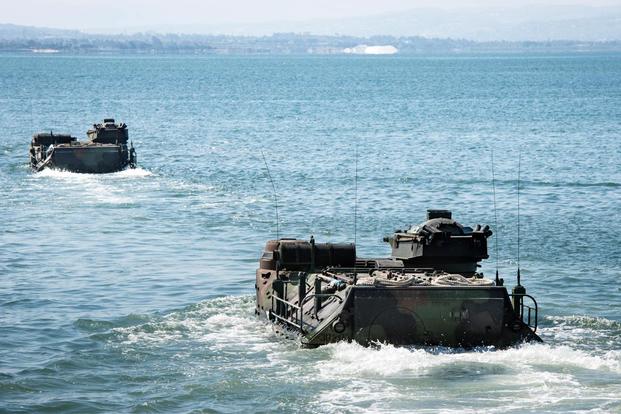QUANTICO, Virginia -- The Marine Corps may have terminated major upgrades to its Assault Amphibious Vehicle, but program officials haven't given up on adding a remotely operated gun turret to the Cold War-era vehicle.
The service recently issued a stop-work order to SAIC, which was under contract to improve the four-decade-old vehicle with increased armor and better mobility, killing the AAV Survivability Upgrade (SU) program, Defense News reported Monday.
"Obviously, the Marine Corps made the decision. Congress was pushing us in that direction -- modernize rather than continue to invest in sustainment," Emanuel Pacheco, spokesman for the Marine Corps' Program Executive Office Land Systems, said Tuesday at Modern Day Marine 2018.
The decision follows the June announcement that BAE Systems will build the service's new Amphibious Combat Vehicle, which offers greater mobility and under-body blast protection than the AAV it will replace.
But officials at PEO Land Systems still plan on improving the AAV so it can survive another decade of service.
"Some of the things we are looking at are the potential remote weapon station in the meantime for the AAV," Pacheco said. "So there are some things we continue to do just to maintain a certain level [of survivability]. It will never have the survivability of the ACV when that comes on line. We just can't do that without major modifications."
PEO Land Systems still has sustainment funding that "we continue to do stuff with," he said, adding that the service will have to re-prioritize the program's $96 million in funding in the fiscal 2019 budget.
The Marine Corps has made past improvements to the AAV, such an egress lighting program a couple of years ago, Pacheco said.
"We have had some issues with some of the parts in the turret that they have had to replace," he said. "Again, what you are looking at is a 45-year-old system where some of those parts are obsolete. We are looking at other ways to either reverse-engineer or just make some improvements. We have looked at a new intercom system; they may look at seating in the vehicles."
He added, "It's really just how can we keep these vehicles viable for the next 10 years or so as ACV comes online."
-- Matthew Cox can be reached at matthew.cox@military.com.











